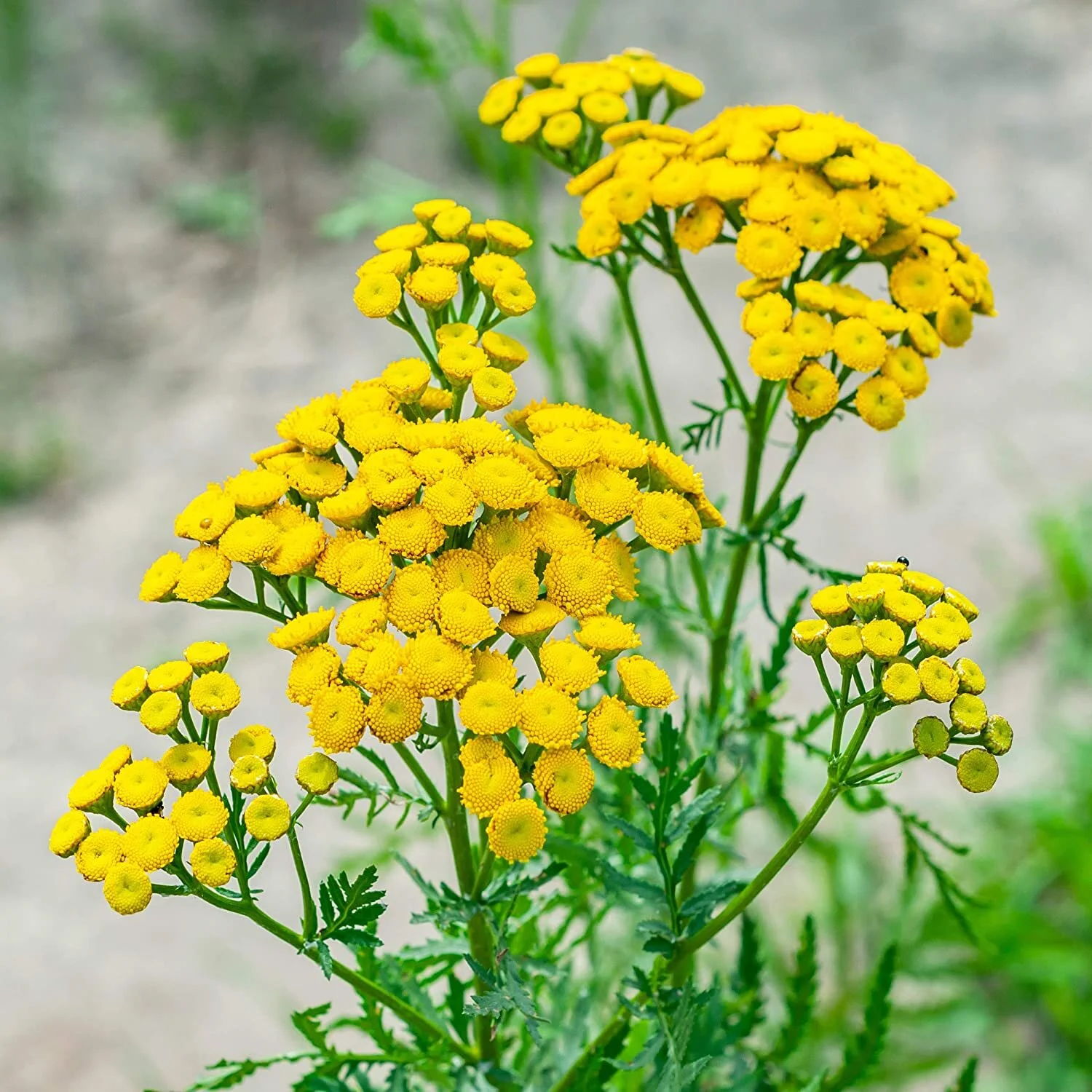
Tanacetum vulgare
Other Botanical Names: Chrysanthemum vulgare
Common Name: Tansy
Family: Asteraceae (Aster family)
Parts used: Aerial parts, flowers
Constituents: Volatile oil (alpha-thujone, beta-thujone, camphor), sesquiterpene lactones (tanacetin), etc. Volatile oil is overall much more toxic than crude herb or other preparations
Taste/smell: Aromatic, bitter, spicy?
Tendencies: Warming?
Actions
Bitter tonic
Aromatic
Digestive stimulant/Carminative
Mild choleretic
Antispasmodic
Emmenagogue (stimulates or increases menstrual flow)
Abortifacient (induces abortion)/Fetotoxic (harms fetus)
Vermifuge/Anthelmintic (kills parasites)
Uses
Internal:
Non-ulcer dyspepsia (indigestion or maldigestion) with flatulence, burping, heartburn, minor cramps, etc.
Biliary insufficiency
Biliary dyskinesia
Loss of appetite
Anorexia
Gas
Atonic constipation
Hypochlorhydria (low stomach acid)
Primary dysmenorrhea (painful menstruation) in low doses
Secondary amenorrhea (ceased menstruation) and oligomenorrhea (infrequent or scanty menstruation) in low doses
Intestinal parasites (especially pinworms) (as enema)
Topical:
Minor cuts and wounds (as a poultice)
Rheumatic pains (as a liniment that contains tansy oil)
Insect-repellent against moths and fleas (powdered flowers)
Dosage
Tincture (1:1, 25%): 10-50 drops (0.5-2 mL) TID
Tea infusion: 1 tbsp per cup
Capsules: 0.5-2 g of dried herb TID
Contraindications
Pregnancy due to its emmenagogue, uterine stimulant, abortifacient, and/or teratogenic effects
Nursing mothers
Avoid use to volatile oil
Avoid use in high doses
Avoid long-term use
Active duodenal ulcers
Gastritis
Hyperchlorhydria
GERD
Biliary obstruction
Acute diarrhea
Acute cholelithiasis
Allergic hypersensitivity to Asteraceae family (i.e. arnica, chamomile, feverfew, ragweed, tansy, yarrow) causes allergic contact dermatitis
Adverse Effects
Convulsions
Arrhythmia
Tachypnea
Vomiting
Rigid pupils
Diarrhea
GI pain
Uterine bleeding
Flushing
Loss of consciousness
Toxicity
Abortifacient and fetotoxic
Possibly carcinogenic in long-term use due to the thujone and camphor in volatile oil
Interactions
None known
References:
Brinker, Francis J. Herbal Contraindications and Drug Interactions plus: Herbal Adjuncts with Medicines. Eclectic Medical Publications, 2010.
Kaufmann, Taylor. NPLEX II Study Guide. Wild Brilliance Press, 2019.
Lun, Vincent, et al. Core Knowledge for NPLEX 2. 1st ed., Marano Publishing Incorporated, 2014.
Marciano, Marisa, and Nikita A. Vizniak. Evidence Informed Botanical Medicine. Professional Health Systems Inc., 2015.
Skenderi, Gazmend. Herbal Vade Mecum: 800 Herbs, Spices, Essential Oils, Lipids, Etc., Constituents, Properties, Uses, and Caution. Herbacy Press, 2004.
Tilgner, Sharol. Herbal Medicine: From the Heart of the Earth. Wise Acres, 2020.


